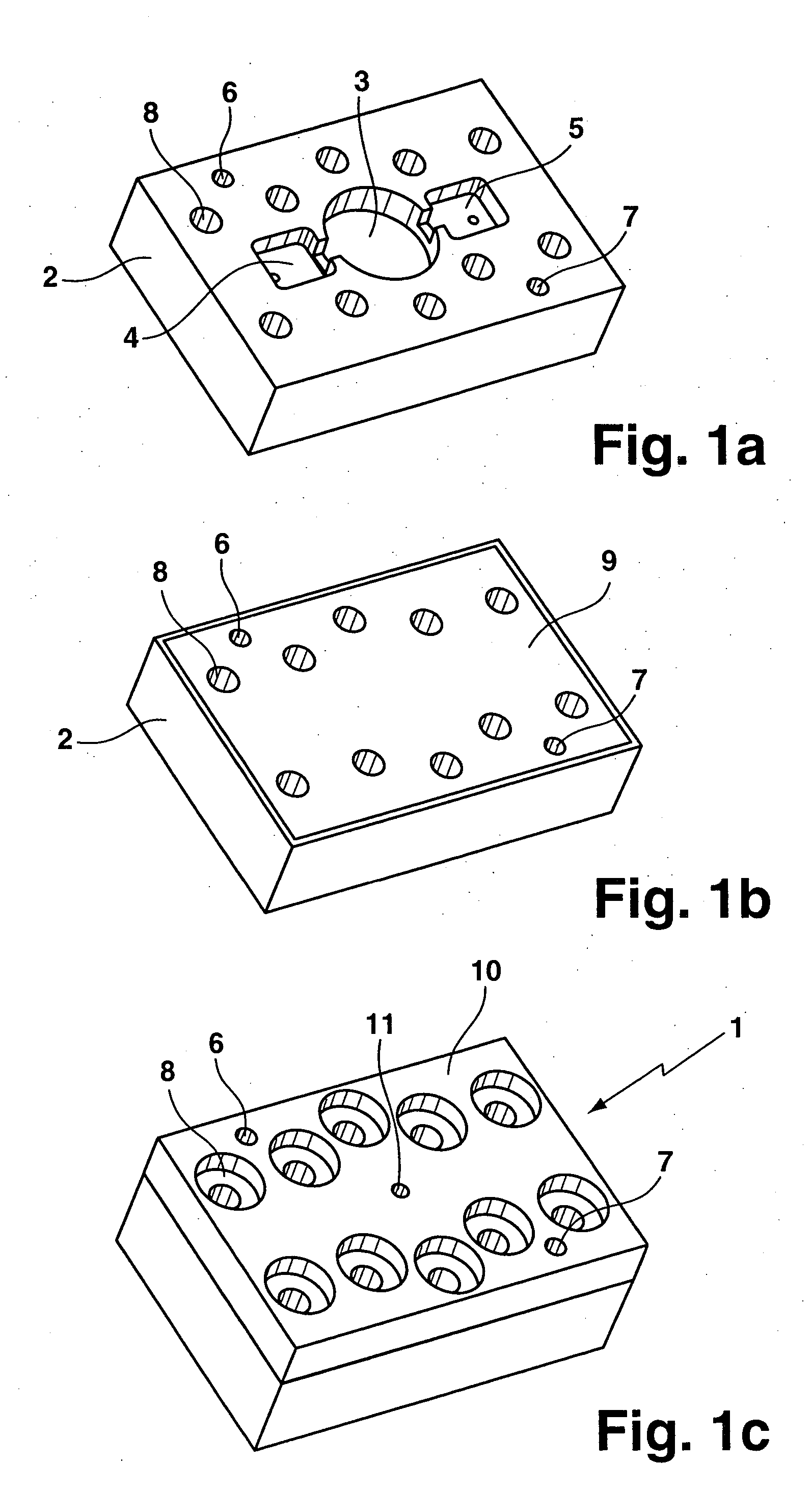RF-resonator tuning
a technology of resonance resonance and tuning components, which is applied in the direction of resonances, waveguide devices, basic electric elements, etc., can solve the problems of increasing the number of problems of standard tuning components, increasing the labor cost of mounting screws/nuts, and high cost of components that are commonly available on the market, so as to achieve the effect of repeatability, cost-effectiveness and straightforward
- Summary
- Abstract
- Description
- Claims
- Application Information
AI Technical Summary
Benefits of technology
Problems solved by technology
Method used
Image
Examples
Embodiment Construction
[0023] In FIG. 1a to FIG. 1c three steps of assembling a prototype RF-resonator 1 are shown. With reference to FIG. 1a, a rectangular milled block forms a resonator body 2 which contains a centered cylindrical hole as a resonant cavity 3. To the left and to the right of the cavity 3, two rectangular holes 4, 5 are formed in the resonator body 2 for receiving a first and a second connector (not shown) being inserted through two pinholes from the bottom of the resonator body 2. Two centering pinholes 6, 7 and ten threaded holes 8 are formed on the resonator body 2 as well.
[0024] With reference now to FIG. 1b, the top face of the resonator body 2 of FIG. 1a is covered with a thin metal foil 9 which has holes at the positions of the pinholes 6, 7 and the threaded holes 8. The metal foil 9 covers the resonant cavity 3 and is fixed by mounting a thick cover 10 on top of the resonator body 2, as shown in FIG. 1c. The two pinholes 6, 7 and ten threaded holes 8 formed in the resonator body ...
PUM
 Login to View More
Login to View More Abstract
Description
Claims
Application Information
 Login to View More
Login to View More - R&D
- Intellectual Property
- Life Sciences
- Materials
- Tech Scout
- Unparalleled Data Quality
- Higher Quality Content
- 60% Fewer Hallucinations
Browse by: Latest US Patents, China's latest patents, Technical Efficacy Thesaurus, Application Domain, Technology Topic, Popular Technical Reports.
© 2025 PatSnap. All rights reserved.Legal|Privacy policy|Modern Slavery Act Transparency Statement|Sitemap|About US| Contact US: help@patsnap.com


